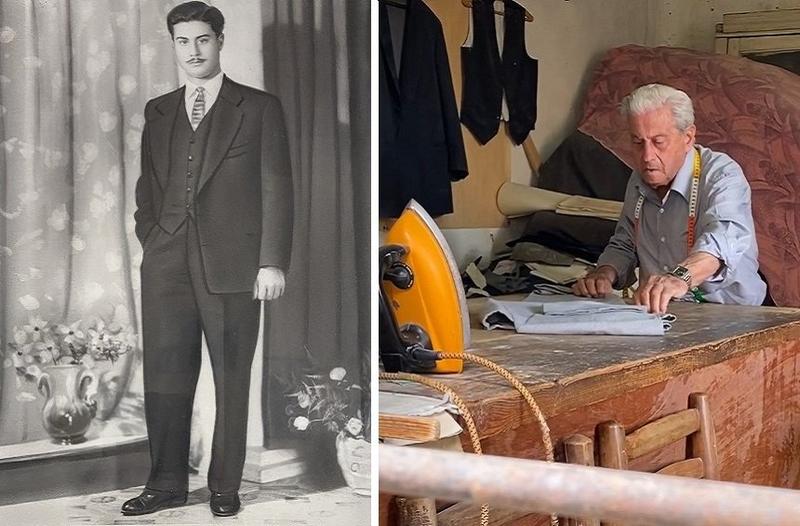
Filippos was born in 1934 in Arsos, which located in Limassol’s mountains. As soon as he grew up he decided to study tailoring in the city. In 1956 he returned to his village and opened his own tailoring shop, a few meters from the center of Arsos.
Back in the day, clothes were all sewn to order and Arsos had a long tradition of tailors, since the 19th century. Filippos is now one of the last few representatives of that tradition. «We needed 5 days or more for each outfit"If the client was in urgent need, we would pull all-nighters in order to finish faster", recalls Filippos, at the age of 86. Even though he has left his shop for years now, it seems like not a single day has passed since he handed in his last suit. He also looks as if he hasn’t stopped sewing either.
His hands might be moving slowly, but his movements are just as decisive. In fact, he seems to move them almost automatically. «We had to do 2 rehearsals for each outfit so that the clothes fit precisely on the customer. " Filippos explains. Like any kind of work, sewing requires attention to detail and art, in order to get a good result and have people choose you. "That was my goal from the beginning, that's why I made a name for myself," he says proudly.

Filippos as a young man (left) and as a groom next to his bride (right).
Once he gained experience and fame, he decided to teach his art. "I had also gone to Mallia, which used to be a large village back then. ". I made outfits there as well, and even a Turkish-Cypriot got to learn tailoring from me. Filippos made outfits comprised of a jacket and trousers (or the so-called "knickerbockers" that were in fashion after the Second World War), as well as women’s skirt suits. Every type of clothing was so unique, that there was a different specialist for each, such as shirts and women’s dresses.
"English cashmere was the best fabric in the world," says Filippos, emphasizing that those who wanted to invest in a good garment made sure to spend their money on the fabric. After all, designs and fashion trends did not change as often back then, so a nice outfit could stay in fashion for ages.
Filippos inhis workshop.
His profession became a part of his identity since Filippos continues to dress elegantly even at the age of 86, as it was always proper for the village tailor. He might no longer go to the tailor shop regularly, but when someone asks him to take them on a trip around his world, he willingly and proudly shows the tools of the work that he experienced since he was a child.
He confidently steps on the pedal of the classic Singer, which is now indistinguishable from the traditional profession of a tailor, and passes the fabric under the needle with dexterity. The spark in his eyes while he is in his workshop, makes you realize that sewing has always been much more than a job to him.
* NOTE: The tributes of the Project "History of Limassol" present information that has emerged from historical research thus far. Any new data is embedded into the tributes, once it has been confirmed.